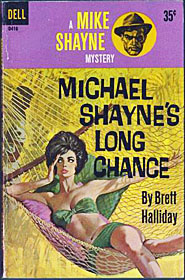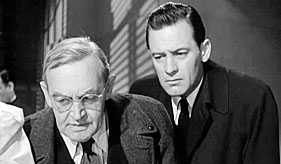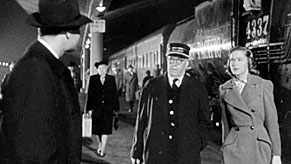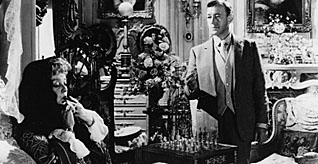Thu 8 Sep 2016
Archived PI Review: BRETT HALLIDAY – Michael Shayne’s Long Chance.
Posted by Steve under Covers , Reviews[9] Comments
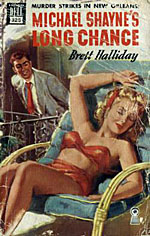
BRETT HALLIDAY – Michael Shayne’s Long Chance. Dodd Mead, hardcover, 1944. Reprinted in paperback many times, including Dell #325, mapback edition. 1949; Dell #866, 1956; Dell D416, 1961, McGinnis cover. (All three shown.)
When the death of Mike Shayne’s wife Phyllis has him packing up shop in Miami, and ready to call it quits with his career as a private detective, his old buddy, reporter Tim Rourke, with a nose for news and an eye for a friend in trouble, starts him back on the right track with a job that takes him back to the old stomping grounds he was once run out of, New Orleans.
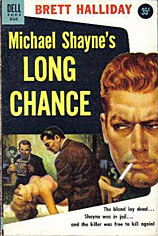
And there, besides a nice girl or two to help chase away the blues, he finds himself hip-deep in a case of murder, complicated by police corruption and the dope-peddling racket in a city where life can be loose and easy and more.
Shayne leads more with his head than he should, but he survives a long night of beatings, doped drinks and a rigged picture frame to pull off a decent bit of surprise trickery to nab the killer. The early Shayne novels were not far removed from the the glory pages of Black Mask magazine, and this tale, no exception, goes down as smoothly as a bottle of Monet cognac.
Rating: B
